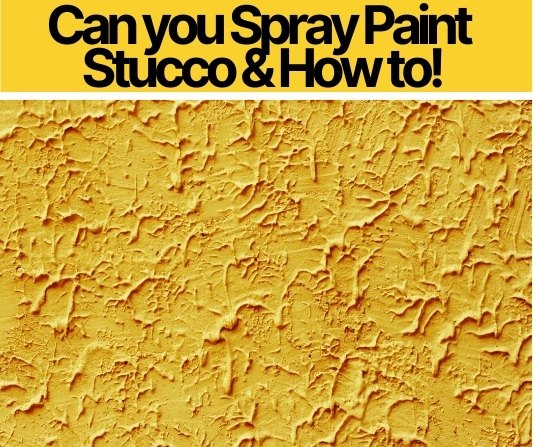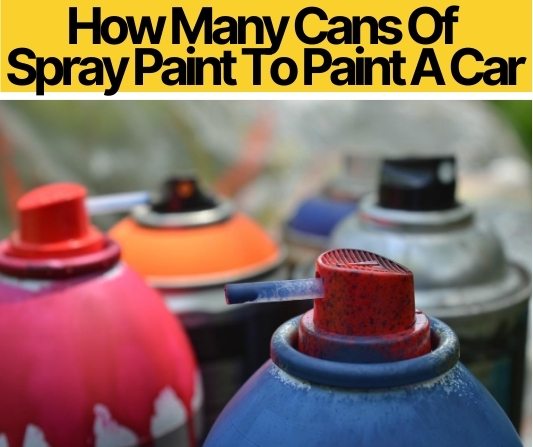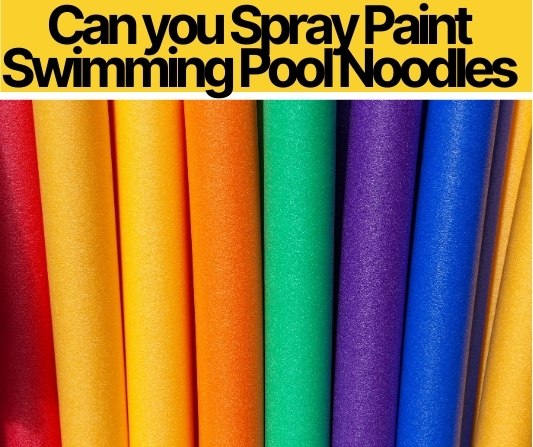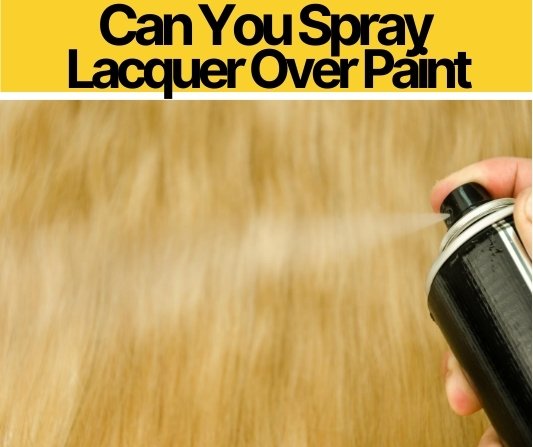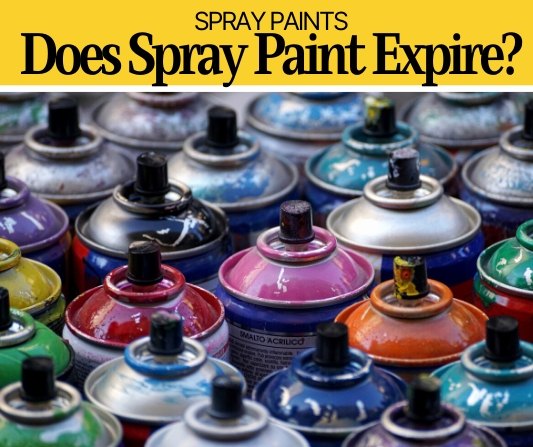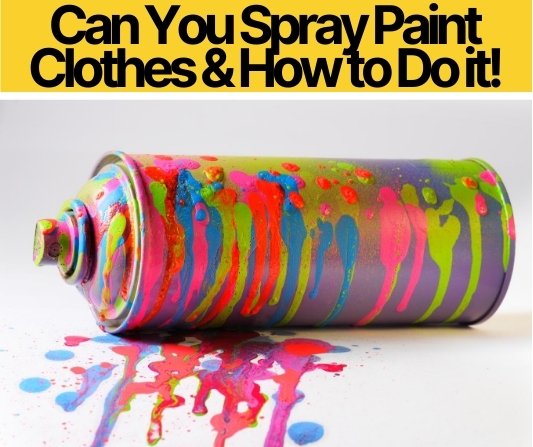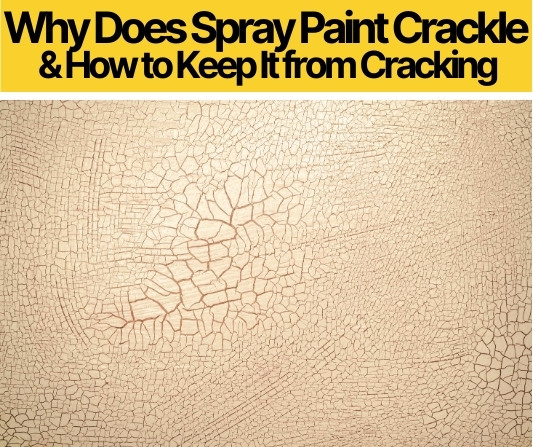 It can be incredibly frustrating when you’ve finished spray painting something, only to closely inspect it, and notice crackling across part of the surface.
It can be incredibly frustrating when you’ve finished spray painting something, only to closely inspect it, and notice crackling across part of the surface.
What can be even more annoying is not knowing what caused it!
But don’t worry, it can be easy to restore a cracked paint job, and there a few tips to avoid crackling in the future.
Why Does Spray Paint Crackle?
The most common culprits why spray paint crackles are temperature, when it is too hot or too cold, or applying too much paint in one go. When you apply spray paint in conditions too hot, the solvent in the paint evaporates, causing the paint to shrivel up and crack. Temperature too cold affects how it adheres to the surface. If you apply too much, the paint on top dries first, while the paint underneath is still wet, causing the surface to crack as the paint underneath moves.
But there are a few more factors that affect paint crackling, and knowing how to prepare the surface that is being painted, and how to fix crackle, can be just as important as the spray painting itself.
As mentioned previously, spray paint can crackle from the temperature being outside the range in which the spray paint is meant to be applied. The spray paint can, should say its optimal temperature range. Applying paint too thickly or, another common mistake that causes crackling, applying another layer before the previous layer has properly dried, can cause crackling as well. These two mistakes both result in the paint below drying after the paint on the surface.
Mixing paints can lead to crackling as well when they don’t properly mix together, and dry and move differently within the layer. Another area of the job that needs careful attention is preparing the surface for spray painting. This involves both cleaning the surface of debris and dust, while also making sure to use a primer if the surface needs it. Failing to do either of these can lead to paint crackling.
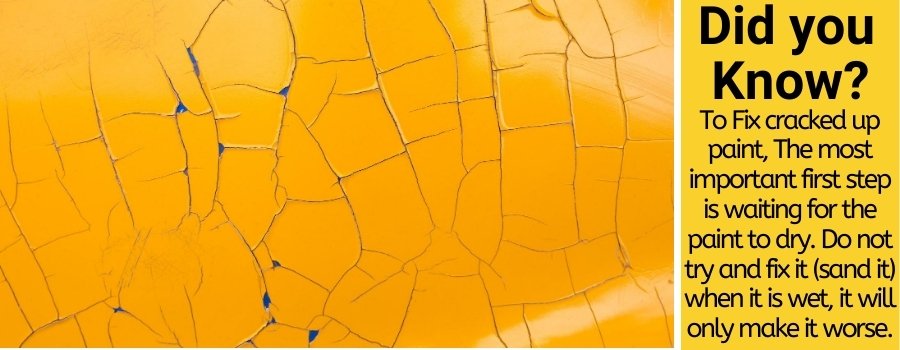
How Do You Keep Spray Paint From Crackling?
This entirely depends on what is causing the crackling. Spray painting only when in the advised temperature range will prevent crackling from too hot or cold environments. Spraying thinner but more layers is better than only a couple layers that are laid on too thickly. This prevents paint from drying on the surface before the rest of the paint. Also, waiting longer than you think can help prevent applying a second layer too hastily before the previous has dried.
Always do your research when mixing paints, this involves both googling to see if anyone has had good results with the two paints you want to mix, and spraying the two paints onto a piece of scrap, and seeing if they adhere well. Prepping your desired surface properly by cleaning off dust and gunk is also advised, but make sure it is dry before you paint. As a general rule, always use primer on wood and gloss surfaces.
How to Fix Spray Paint Crackle?
Spray painting crackle can be, in most cases, quite easy to fix. Sure, it is more hassle and best to avoid it, but you shouldn’t panic if you notice crackle. The most important first step is waiting for the paint to dry. Do not try and fix it when it is wet, it will only make it worse. Once it dries, paint is easier to get rid of; you can sand down the crackling, and then lightly apply some primer. Once this dries completely, it may be necessary to sand again, if the primer hasn’t set steadily. Then, once it is dry again, apply another layer of spray paint.
Spray Paint Cracking on different materials – Why & How to avoid/fix it?
One of the reasons spray painting is so popular is because it is easily applied to lots of different surfaces. Metals, plastics, wood, mirrors, glass, ceramics are just a few of the notable surfaces you can apply paint on. But with each surface, comes slightly different rules, for some you can get away with not using primer, and some you definitely do not want to spray paint without priming it first.
On metal
Metal is very commonly used for spray painting jobs. Temperature is often the issue, as metals can get quite cold, meaning the paint doesn’t adhere too well- use a simple heater to warm up the piece you are painting. Applying paint after the previous layer of paint is completely dry, while also making sure that the surface is prepared beforehand, is important.
Preparing the metal surface for spray painting is as important as the spray painting itself. You want to make sure you do two things: make the surface as smooth as possible beforehand, and use a primer. Both of these will help ensure that the paint will go on as evenly and smoothly as possible. Cleaning with a wet cloth, removing any loose paint, sanding down the surface, are all good practices to ensure the paint will go on smoothly.
On plastic
Plastics are often used by hobbyist for homecrafts, which means the plastic’s shapes can be complicated and multi-surfaced. This makes spray painting more difficult, as it means you’ll need to spray from multiple angles to achieve a complete finish. However, this makes layering too much paint very easy, and crackling can ensue in the spaces where the areas of paint applied from two different angles overlap. To prevent this, make sure you always wait long enough between two different angles that are likely to overlap. It’s always better to just wait a bit longer before the next coat!
On wood
Always use primers on wood and always ensure it is smooth. That is the best advice that can be given for spray painting wood. Crackling on this surface often results from the preparation, before the job, not being thorough enough. If this isn’t a smooth surface, wood can be rough and have little, protruding splinters; sand it properly to prevent crackle. Primer is essential for wood and should never be neglected before painting, as more often than not, the wood will crackle without it.
On glass
When spray painting glass, it isn’t necessarily essential to use a primer, but light, plentiful layers will ensure a smooth surface. Crackling on glass often results from too much paint being applied in one go, and the top layer drying before the layers below. Glass can be very easy to spray paint, as the surface is already guaranteed to be very smooth.
Similar to plastic, if you’re spray painting a vase, or something that is curved and requires awkward angles to spray paint, crackling can be caused by applying too much paint in one area, due to the use of multiple angles. Again, ensuring that a previous layer, or surface close to the one you want to spray paint, is completely dry before spray painting.
Why does spray paint crackle on second coat?
It is very easy to get crackling on the second coat, or subsequent coatings from thereon if you do not wait for your paint to dry. If you wait too short of a time, what you’ll end up with is wet paint on top of wet paint. This means the paint below the surface is not subject to the same cooling qualities as the paint above, i.e. the external air, which means it won’t dry properly. However, the paint on top is drying perfectly fine, and will do shortly. Overtime, the wet paint beneath the surface will move as it sets, and will crackle the surface.
Getting the Crackle Effect ( On Purpose)
When spray painting automobile surfaces or furniture, you will often want a nice, clean paint job, which means you’ll want to follow all the guidelines above. Hobbyists and homecrafters however, may opt for the crackle finish, to add artistic effect to their piece. Ceramic or glass bowls can look excellent with the crackle design on their surface.
How to make spray paint crackle
When purposely achieving a crackle effect, you still want to sand and prime the surface to ensure that the crackle effect looks professional. Despite what has been said previously about light layers of paint, for this type of job you want a thick base coat of spray paint, this will allow large crackling effects that look properly pronounced. You’ll then want to allow it to dry a reasonable amount, but not completely, to allow the crackling to effectively take place.
There are also Special Crackle Effect Paints if you really want to be sure that your project will succeed!
Trial and error of when to effectively apply the crackle spray paint will most likely need to take place, perhaps on a piece of scrap metal previous to the actual job.
Then, a thick layer of crackle spray paint, to have a significant effect of crackling across the surface. More airflow across the surface, using a fan, will allow the parts of the crackling effect to look more fragmented.
Crackle spray paints
There are specific Crackle Effect Spray Paints available, which I heavily advise to use, as it is designed to do the job you want. Crackle lacquer is a good form of spray paint that effectively gets the desired effect, but it is best to play around with a couple different types on scrap metal, as they each have slightly different end results. It can be expensive to use only crackle spray paint for a finish, they can be used in conjunction with other spray paints – do your research of which can be mixed beforehand.

